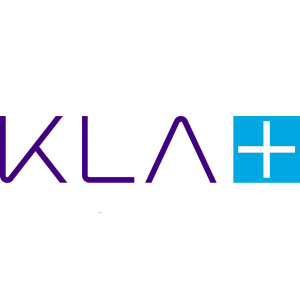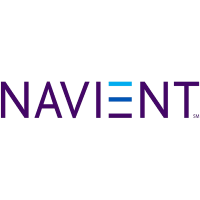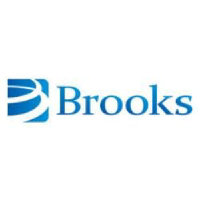
Atlas Copco AB
STO:ATCO A


| US |

|
Johnson & Johnson
NYSE:JNJ
|
Pharmaceuticals
|
| US |

|
Estee Lauder Companies Inc
NYSE:EL
|
Consumer products
|
| US |

|
Exxon Mobil Corp
NYSE:XOM
|
Energy
|
| US |

|
Church & Dwight Co Inc
NYSE:CHD
|
Consumer products
|
| US |

|
Pfizer Inc
NYSE:PFE
|
Pharmaceuticals
|
| US |

|
American Express Co
NYSE:AXP
|
Financial Services
|
| US |

|
Nike Inc
NYSE:NKE
|
Textiles, Apparel & Luxury Goods
|
| US |

|
Visa Inc
NYSE:V
|
Technology
|
| CN |

|
Alibaba Group Holding Ltd
NYSE:BABA
|
Retail
|
| US |

|
3M Co
NYSE:MMM
|
Industrial Conglomerates
|
| US |

|
JPMorgan Chase & Co
NYSE:JPM
|
Banking
|
| US |

|
Coca-Cola Co
NYSE:KO
|
Beverages
|
| US |

|
Target Corp
NYSE:TGT
|
Retail
|
| US |

|
Walt Disney Co
NYSE:DIS
|
Media
|
| US |

|
Mueller Industries Inc
NYSE:MLI
|
Machinery
|
| US |

|
PayPal Holdings Inc
NASDAQ:PYPL
|
Technology
|
Utilize notes to systematically review your investment decisions. By reflecting on past outcomes, you can discern effective strategies and identify those that underperformed. This continuous feedback loop enables you to adapt and refine your approach, optimizing for future success.
Each note serves as a learning point, offering insights into your decision-making processes. Over time, you'll accumulate a personalized database of knowledge, enhancing your ability to make informed decisions quickly and effectively.
With a comprehensive record of your investment history at your fingertips, you can compare current opportunities against past experiences. This not only bolsters your confidence but also ensures that each decision is grounded in a well-documented rationale.
Do you really want to delete this note?
This action cannot be undone.

| 52 Week Range |
150.8971
205.8
|
| Price Target |
|
We'll email you a reminder when the closing price reaches SEK.
Choose the stock you wish to monitor with a price alert.

|
Johnson & Johnson
NYSE:JNJ
|
US |

|
Estee Lauder Companies Inc
NYSE:EL
|
US |

|
Exxon Mobil Corp
NYSE:XOM
|
US |

|
Church & Dwight Co Inc
NYSE:CHD
|
US |

|
Pfizer Inc
NYSE:PFE
|
US |

|
American Express Co
NYSE:AXP
|
US |

|
Nike Inc
NYSE:NKE
|
US |

|
Visa Inc
NYSE:V
|
US |

|
Alibaba Group Holding Ltd
NYSE:BABA
|
CN |

|
3M Co
NYSE:MMM
|
US |

|
JPMorgan Chase & Co
NYSE:JPM
|
US |

|
Coca-Cola Co
NYSE:KO
|
US |

|
Target Corp
NYSE:TGT
|
US |

|
Walt Disney Co
NYSE:DIS
|
US |

|
Mueller Industries Inc
NYSE:MLI
|
US |

|
PayPal Holdings Inc
NASDAQ:PYPL
|
US |
This alert will be permanently deleted.
 Atlas Copco AB
Atlas Copco AB




















 You don't have any saved screeners yet
You don't have any saved screeners yet

Ladies and gentlemen, welcome to the Atlas Copco Audiocast Teleconference Q1 2022.
[Operator Instructions]
Today, I'm pleased to present CEO, Mats Rahmström; CFO, Peter Kinnart. Speakers, please begin.
Thank you very much. Good morning, good afternoon, good evening. Welcome to all of you attending this call, the Atlas Copco Group Q1 Earnings Call. Before we start, and I hand over the word to Mats Rahmström, I would like to already now ask you to -- when the question session starts that you will only ask 1 question at a time so that everybody has an opportunity to bring a question to your attention. And considering the fact that we also will have the Annual General Meeting for shareholders today. We are on a tight schedule, so we will keep strictly to the time for this call.
With that, we can conclude the introduction, and I hand over to Mats.
Thank you, Peter. I think it's appropriate that I say a few words about Ukraine and Russia before we start. We have, during the quarter, focused on the safety for our 41 employees. We stay in daily contact with them, and we had also offered employment outside Ukraine and that is, of course, mainly then valid for females since men are between 18 to 60 and not about to leave. We have also arranged with direct donations and financial support to ease the situation for them.
And in Russia, as previously reported, Atlas Copco in Russia has between 2014 and January 2022, sold equipment and service to 4 companies where we can't guarantee pure receivable applications. To give a summary of what we know this far, the majority of the sales was related to service. The equipment sold are standard products and have not been modified or specifically tailored. However, the Group's guidelines and policies have not been followed since we cannot guarantee pure receivable applications. We have been in contact with ISP in Sweden, inspectorate for strategic products, and informed authorities in Belgium.
We have reminded all our employees about the importance of following internal guidelines and policies. We have also changed the screening cruises away from Russia and strengthen the process so we try to make sure this is not repeated. We have also initiated a thorough investigation, together with external partners, looking into all our sales in Russia between 2014 and 2022. And as you can understand, this is fairly complicated, and we have not finalized the investigation yet.
This far, we have found very few cases, but it's not sufficient documentation to completely determine the customer's application. Trade Compliance is prioritized in the group. We will continue to assess the results of the investigation and cooperate with relevant authorities. We take this very seriously, and we are determined to make sure we follow the rules and regulations going forward.
And then I will start with the report, and that's Slide #2, which is called Q1 in brief. We had fantastic orders received, SEK 40 billion and 23% organic growth. Compressor Technique had 20% growth, and that was a record. Vacuum Technique had 20% growth, and that was also a record. Industrial Technique, 11% growth, and that was also a record. And Power Technique was fantastic with 55%, of course, that's also a record for us. And this is versus a quite strong quarter last year as well.
Looking at the regions, we can see double-digit growth in all the regions. Service, some challenges in service in Auto. We can see that there are shortages of chips, and there have been a lot of closures during the quarter, but we are also suffering from the shortage of components and also COVID. Revenues, it came at SEK 30 billion, of course, we would like to do more. But considering the situation with 7% growth, we are quite pleased with the revenue as well. It is very unpredictable and challenging.
In the beginning of the quarter, we could see COVID spreading through Europe. And of course, that ends now in Asia, especially in China. We're also challenged to handle the balance between components availability and the headcount. We are buying components on the spot market, and we are buying more air transport than we normally do. And we are taking these costs because our main focus is to focus on our customers to make sure that we can supply as the best we can. And of course, I think you can see evidence in that in the orders received.
We see healthy profitability, SEK 6.7 billion, 22.4% margin and an adjusted margin when we take the long-term incentive at 21.7%. That's also a record for us.
Go to the next Slide #3, Q1 financials. And maybe you can give some attention then to the graph, and it came in orders received better than expected. And we had high expectations, as you could see in the forward-looking statement, but CT, Compressor Technique coming in better than we expected. And of course, with Power Technique coming significantly better than we expected as well. The only thing, I think, adds from the previous slides on this one is the cash flow. You can see a rather low cash flow, and that is mainly because we are building up inventory to handle the orders on hand and the high orders received that we have.
If you then could move to Slide #4, that should be the map. It's all green, double-digit growth in all regions. I think it's quite an achievement to see that our product portfolio and services is well accepted in all these regions. And we are quite pleased with having 40% of our sales in Asia. This is where growth is happening, but also the balance between the regions. During the last 2 years, we have started step-by-step to structure ourselves -- to protect ourselves better from protectionist and COVID to shorten the lead times of our product and the value chains, we call it, local for local, and that's why we have invested quite heavily in our structure in the pre-power hubs, Asia, with focus in China, Europe and North America, with a focus on the U.S. and that is building in an insurance for us and building in agility into our system.
On Slide #5, you have the growth of our third quarter we have 6 consecutive quarters now with growth. And of course, we will see tougher comparisons in the coming quarters.
Slide #6 is the sales bridge. And you can also confirm just the currency there, 9% positive on orders received an 8% on revenues. And Peter will later guide you on the next quarter on the currencies.
#7. Where you have the pie chart Compressor Technique, very interesting with 20%. We can see that industrial compressors, big and small, selling really well. What came out more as a surprise was a lot of decision in gas and process seems to be linked to compress and liquify gases and expand on gases more on linked to sustainability, very positive for them. And in Power Technique, then, you can see the main part, that was the U.S. rental companies buying in capacity earlier than price increases. And of course, it's also seasonal for rental companies, but very positive for us that they trust us to be their supplier.
Slide #8. Compressor Technique, as I said, SEK 17 billion in orders received and strong, both in industries big and small, gap was very positive, continue to be very solid, which is good for our mix in service. Revenues is substantially up 7% organically and SEK 13 billion, and a very solid margin at 23.8%, supported by currency, but negatively affected by the supply chain constraints, which I could repeat on all the business areas, and very solid return on capital employed in 90%.
Yes, Vacuum Technique, the last 5 quarters, looking at the graph, it's quite a fantastic development. Another record. We did SEK 11.5 billion, 20% up on orders received. Revenues, 10% up, and they have managed to build on the revenues quarter-by-quarter. And here, you can see, of course, that the operating margin is challenged. It's the supply chains, as we discussed, but also some of the more long-term customers where pricing is not as easy to get through. Return on capital 5.5%.
Slide #10, Industrial Technique. They also came in with a record orders received. We can see the outlook is linked to electrification. But here was also positive general industry development. It's -- also many applications linked to sustainability. It's inverters, it's electronic, it's batteries, it's motors and other applications there. As service is challenging in Industrial Technique due to that they are lacking air chips for the manufacturing. So we see a lot of shutdowns and then we don't have access to the plants, and there is no rundown from the tool side or so. And they also have a challenge on the supply side, and it's mainly linked to electronics. Operating profit at 21%, EBITDA at 23.5%, also here supported by the currency.
Power Technique. Yes, as we said, was surprisingly strong, a lot of orders, SEK 6 billion, U.S. rental companies a main part of that buying capacity. They're buying before price increases. So you can say that they placed order early, but you should have in mind also that we had quite the strong Q4 in 2021, and we were not sure how much was left there to offer the customers. Continued strong development of specialty rental and record revenues here. And here, you can see that it's also electronic, but also engines that is the most difficult part for the operations. And operating profit at SEK 664 million, which is a record for them and strong margins at 17.9%. Innovation, here, maybe I should highlight, this is a typical application wherein the past, they used the diesel engine and now then they introduced electrical engine here as well. So in line with what we do for sustainability for ourselves and also for our customers, also interesting with the 2, I believe, spot on acquisitions, Wangen and LEWA that has been announced as well.
Then we come to Slide #12, that summarize the group. And you can see that, as a service, then we give the EBITDA 23.7% and operating profit margin at 22.4%. And by that, I hand over to Peter.
Thank you, Mats. Following the operating profit, we have, I would say, stable net financial items. The small increase that we see there is mainly due to the onetime cost related to the fact that we bought back a bond and issued a new bond at a much better rate. Then we move to the tax, which was effective tax rate at 21.9%, which is also the level that we expect going forward throughout the rest of the year, aiming at about 22% for the full year. And as a result of all of the above, we have a profit for the period of SEK 5.2 billion compared to SEK 4.1 billion last year, an increase by 27%, impacting the basic earnings per share positively going up to SEK 4.28. Return on capital employed of 27%, which is largely increased, driven by volume and return on equity of 30%.
Going on to the next slide, adding a little bit more color on the profit bridge on Slide 13, where you can see a number of impacts on how the margin has developed. First of all, quite a positive impact from the share-based LTI programs. Acquisitions being slightly dilutive, but quite a positive currency impact of 4.6%. And all other things remaining the same or currency rates remaining more or less the same, we would expect a similar currency impact going forward, so basically status quo.
Then talking about drop-through a little bit, as Mats already indicated. I think, there's a tremendous amount of headwinds, whether it is material cost increases, labor efficiency, Q2 absences as a consequence of COVID, inefficiencies due to lack of components in the factories, freight that is becoming more and more complicated. I think we have also noted that within our organizations quite a lot of efficiencies have been achieved, but unfortunately, they are basically compensated by all these negative headwinds that we see.
And so as a result, we have this job to as it is. But I think despite of all these headwinds, I think we are then actually quite proud of the achievement. And I think, as Mats explained, we want to focus particularly on the customer and see this rather as an investment in the future that we will be able to harvest from later on. And of course, meanwhile, we continue to work very hard with our entire organization across the different business areas to continue to work on price, and we do see positive impacts from price activities across the different business areas.
So overall, as I said, quite happy with the overall outcome. And if we then go to the next slide, we see a little bit more detail for the different business areas for Compressor Technique, you could say that the profitability level to drop-through is on par with the current level. I think the Vacuum Technique is probably the business area that maybe sticks out a little bit more than the others. And of course, given the tremendous growth that we have seen across the last quarters, and again in the first quarter of 2022, I think it's not really surprising that it is even more challenging from a supply chain perspective.
On top of that, when we look at semi particularly, we see these long-term contracts where it is, of course, even more complicated with the key accounts to increase prices proactively as we do in the other business areas. So I think also there, overall happy, but not satisfied, you could say, but I think proud on the achievement from our employees across Vacuum Technique and the other business areas.
In Power Technique, I would probably highlight a very strong flow -- adopt to -- that we have witnessed over the quarters, not only a very solid order intake that was a complete blowout, but also a solid performance from a profitability point of view.
Moving on to the next slide, which is on the balance sheet on Slide #15, just highlighting a couple of main changes. First of all, on the balance sheet. The inventories, of course, sticking out with quite a substantial increase, and that is obviously related to the buildup of component stock that we want to have in order to make sure that we have components available when we are able to produce the products. We also see an impact on our sales stock and that might be initially surprising at first, but customers are also sometimes pushing back deliveries because other products that they need before our products are also delayed, for example. And we also, of course, are confronted with products that are basically finished, missing 1 or 2 components and that are standing aside to be reworked afterwards, and that adds also to the inventory situation.
The receivables are also going up quite substantially. But if you look at it from a relative point of view compared to revenues, very much stable. And actually, we feel that our overdues are well under control and the risk profile is actually going slightly down. And then, of course, on the asset side, the cash is also increasing quite substantially. Here, of course, we need to note that in the coming quarter, we will see the dividend or half of the dividend payments taking place as well as the redemption, if that is finally blessed by the Annual General Meeting, obviously. And of course, also the acquisitions Wangen and LEWA that will come through in the second quarter.
On the liability side, the increase of the equity is, of course, related to the retained earnings increase. On the interest-bearing liabilities, the main reason for the increase is related to the issue of a EUR 500 million bond, which we bought back and then reissued at a much lower interest rate, and that is the main reason for the decrease there. On the noninterest-bearing liabilities, the main reasons for the increase are the payables, which, of course, go very much hand in hand with the inventories going up. Also an increase in advanced payments, which is related to the orders received on particularly project business, where, of course, we are typically having multiple installments and where we get advanced payments from the customers. And finally, accrued expenses related to the execution of the projects that we are able to invoice. So that is explaining the development there.
And then we move on to the cash flow. I think the first thing to highlight there definitely is the enormous operating cash surplus that we were able to generate over the first quarter of SEK 8.1 billion. But then as we already indicated, the cash flow ends up being, of course, quite a bit softer, mostly due to the change in working capital, which is, of course, contributing a lot. And then this is basically, by and large, the inventories. And then the last point to highlight maybe on the cash flow for the first quarter is the investments in property, plant and equipment, where you see more than double impact on the cash flow than the same quarter last year.
And that is due to the investments that we are doing currently. We have already indicated at earlier occasions that we have quarter after quarter, even during COVID and 2021, decided on quite a number of substantial investments in capacity, and that is now, of course, starting to affect the cash flow as well, in this case, particularly Vacuum Technique with large investments in the Korean factory as well as in Qingdao in our Chinese factory. And then finally as well some additional machinery investments that we decided for Compressor Technique over the last quarters, and that then gives us an overall result of SEK 2.4 billion cash flow versus SEK 4.3 billion the same quarter last year.
And with that, we come to the end of the balance sheet and financial items. Then I would like to hand over back to Mats to talk a little bit more about the near-term outlook.
Thank you, Peter. That's Slide 17. It's a near-term outlook, where we're trying to judge the activity level among our customers down from Q1 to Q2. And it reads all of the word current economic development, the outlook uncertain. And what we refer to here is, of course, the COVID situation. And I guess it would be question anyway. In China, we have 10 manufacturing units of size. And if I take the average yesterday, it might not be valid for today, as you understand. We are running at 75% capacity approximately, but our distribution centers are in the Shanghai region, that we're running in close loop in those issues and it's only a capacity of 25%. So it will have an impact. And as long as it is shutdown in Shanghai, it will be difficult for us.
And then, of course, we don't fully know how the Russian and Ukraine part. We have indicated that it's -- the Russian part is 1.5% of our revenues. So that might not be significant, but of course, it can have an impact on the European economies going forward. And we don't see the light in the tunnel when it comes to components. I think I asked the questions to -- 4 of the business areas. And I think they all were saying that, no, we don't see that happening in this coming quarters, that the continued challenge and we just need to be better than competition.
Underlying demand, though, as you could see from orders received although some preordering -- although we can see that it was spread throughout equipment and service also geographically. And we see that activity levels in terms of product is high. And that's why we also said that we believe that the activity level will continue, but maybe not then on the same level as we have seen in the first quarter of the year.
Thank you, Mats. Then I would like to hand over back to the operator to guide us in the questions session. Thank you.
[Operator Instructions]
Our first question is from Andrew Wilson of JPMorgan.
I just wanted to ask, I think you made a comment on Power Technique, specifically with regards to some pre-buying ahead of price increases and some, I guess, early ordering. I am trying and get a broader comment on the group as a whole and thinking about the other business areas with regards to if you think you've seen significant pre-buying in those businesses as well? And if that plays any -- I guess, any role in the comment around not necessarily repeating the Q1 orders in the near term despite obviously, market demand still being very strong.
In terms of pre-ordering, it's also difficult for us to judge, of course, what is pre-ordering and what is not. But as situation is with inflation right now, there is, of course, quite frequent announcement of price increases in all our business areas. In Power Technique specifically then, there was a very strong Q4 already. So we can see that. And that we don't normally see. And then, of course, the high demand that we have seen now. So we believe it will be a softer Q2 for Power Technique.
Yes, sorry, just in the other businesses?
When we look at how solid the orders are in the other business side, I would say that project business we see in Compressor Technique seems to be very solid. And I think some of them have, as I indicated, in gas and process have actually taken decision earlier than we expected. And in the bigger oil-free machines, that's product business, the gas and process, we think it's -- we know the projects. We know what it's for, and we haven't seen any cancellations.
And we have not seen any delay in those orders. They're still pushing us for the delays we see sometimes, as Peter mentioned that someone else has not delivered. Where we see a risk, of course, if we see a softer market in Compressor Technique would be in industrial with the smaller compressor, which was also distributed through distributors around the world. And of course, they place bigger orders than normally, and that would be maybe the first step that you see that. We have not seen that either. In vacuum, semi mentioning that, they're trying to buy into capacity because you can see we don't have enough capacity real orders as well. And in Industrial, I don't see any pre-ordering. We don't have so much distribution there either an Industrial Technique out of tradition that it's linked to product business in auto. And I don't see a big risk there either. So I think that's the best we can give at this point.
Our next question is from Daniela Costa of Goldman Sachs.
I'll stick to one. Wanted to get some color on like when you're thinking about your guidance basically for the Q2, which is sequentially slower than 1Q, are you basing that sort of on some data points that you're seeing already? And can you talk us like through that? Or is this still largely based into just your macro expectations? And I guess, related to that, sorry to add this, but you talked a lot about customers delaying because they don't have components. But is there a risk of demand disruption that you might perhaps start to see with some of the projects that your customers are getting sort of their IRRs, not making sense given all the cost inflation going on? Any thoughts on those would be extremely helpful.
Yes. I mean, if we start with the quarter as such, just looking at the graph, of course, you can see the deviation. And we also said a couple of times on the call it was quite a bit of our own expectation, and we don't think that will be repeated, but we might be wrong again, of course. And then I lost out on your -- you wanted color on, sorry.
No, on your customers, when you said earlier that basically some customers, they were delaying I guess, the deliveries because they didn't have something in the system. But I guess the other question we're getting frequently is demand disruption because of high prices everywhere else, not just on your equipment, obviously, but if you're seeing any signs that your clients are maybe rethinking the underlying projects that they're using their equipment on because their return on those investments stops to make sense?
No, we haven't seen that. It's been the other way around in Q1, of course, and we haven't seen that early on in April either, even though we didn't guide on that, but so far its been very solid in the industries that we operate in. That's said, we don't know how some of these things that I just mentioned, been.
Our next question is from James Moore of Redburn.
My question is around the Vacuum margin and the 220 bps drop in the low drop-through. And Peter, thank you for mentioning the supply chain and the large customer pricing dynamics. I just wondered if you could break down the organic drop-through a bit qualitatively. Firstly, on price realization. Any way you could help us quantify what percentage price realization you got in the quarter, but what you would have had to get to be net price cost neutral?
And secondly, within this, can you say what's impacting on the cost side? Is that a particular suite of components? Is it semis or any road maps? And finally, on mix, could you say across the divisions, which really saw the biggest drop, I -- drop in margin? I'm assuming -- am I correct to assume it's the semi OE unit that's really the principal driver of this?
Thank you, James, for your question. No, I think, for price, of course, is as always very, very difficult to give a very exact number because what we try to measure is like-for-like products. But then you have, of course, a lot of project business. You have a lot of products that are not really -- have a comparable alternative to do the calculation against. So it is more of an indication that we try to get across the BA. What we do see is that, in Vacuum Technique, it continues to be much more difficult in general to push up the price levels given the long-term contracts, particularly with the key accounts.
And that has not fundamentally changed. But we do see overall gross Vacuum Technique as well a better price increase throughout the quarters than in earlier quarters. But then on the contrary, that is then again met by even further price increases. We see the inflationary tendencies, whether it is labor cost in a number of markets, whether it is component cost that is going up quite substantially, spot market buying, of course, is adding to it.
And of course, when it comes to spot market buying or buying in general, particularly if it's about the microchips, for example, if at a certain point, we can get hold of a batch of microchips that might cover 2-year demand, we will, at this point, the question from the suppliers, do you take it or don't you take it? And then I think we just decide to take it almost whatever the cost may be because we just needed to produce the products and deliver to our customers and live up to our commitments.
And that, for us, is the main focus still. And of course, COVID, adds even more complexity within our own operations, I mean we have the manpower to use significantly more. But as we have not all components available, that becomes rather inefficient. You see the same effect happening in our supply chain where also our suppliers are affected by COVID outbreaks. And then as a result of that, of course, they can't supply or they can't supply even less than what we had hoped for.
And then to top it all off, you could say maybe we have Ukraine and Russia, where, of course, the number of commodities, not necessarily commodities that we buy directly because we have very little impact from supply chain directly, but of course, indirectly, there is an impact from raw materials, whether it's pig iron used in foundries, for example, or other type of material that are used somewhere throughout the value chain, ultimately, further affecting the supply chain complexity and, of course, driving costs also further up.
So I think that's a little bit the picture we see. And I would say, in Vacuum Technique, again, it is the most complex because of the fact that the growth level that we have seen over the last 4, 5 quarters is, of course, not mentioning Power Technique in this particular quarter, of course, but otherwise, it has been outperforming all the other business areas quarter after quarter in terms of organic growth. So I think that makes the challenge for them even more complicated than for the others, I would say.
Our next question is from Lars Brorson of Barclays.
Can I follow up, please, on VT and then ask a question on VT, sorry for the 2. But just on the longer-term picture for VT, Pete, notwithstanding the recent investments in Korea and Qingdao. How are you thinking about longer-term need for capacity investments? I mean the semi-VT business, I guess, has historically targeted sort of 70%, 75% of utilization levels to maintain some flexibility on key accounts. And I guess had it not been for the supply chain constraints and the extended lead times, you'll probably be running close to 100%. So how to think about the possibility of further capacity investments coming during the course of this year within VT? I'll stop there.
Yes. Well, I think definitely correct analysis. If today, we had all the components available, the capacity would simply not be there to fully deliver on all of these orders. But I think we were satisfied to see that during 2020, when COVID started, then in 2021, we continue to invest in capacity with repetitive approvals by our Board of additional capacity investments in Vacuum Technique. And that's what you see coming through now in the cash flow as well and in the balance sheet, of course, with very significant investments kicking in, in Korea, particularly and China and Qingdao, but also in the U.S. as well as in Europe. And all of these investments are gradually coming online across Q2, Q3 2022 and further into 2023, even 2024. So from that perspective, as over time, hopefully, the supply chain will get somehow more under control or more availability will be there for the components, we should be able to deliver gradually on the demand that we have seen from our customers.
So will we do even further investments? Well, that remains to be seen in the coming quarters. But currently, we are very happy that we have taken all decisions in the past, and that we see the capacity coming online step-by-step.
Lars, that what you see right now is the investment in Asia and also that we have decided that we want to be the #1 supplier in Americas as well. I don't have any numbers or exactly how it will look like, that we have ahead of us. And I think it's 4 or 5 semi plants being built in the U.S., and we are quite determined to be the #1 supplier there.
Understood. Can I squeeze 1 in quickly on PT. There I say the problem child historically, albeit with some very bright kids in the Atlas family. The organic drop-through in the 50s is really quite impressive. Is that sustainable? It's still a bit unclear to me how much mix impact margins in any 1 quarter in PT? And then, of course, quite a step-up in M&A activity this quarter. You flagged that, I think, 4, 5 years ago, but it's been fairly quiet until now. Are we on the cusp or are we now starting to see a bigger M&A push in PT?
I'll start with the M&A question. So we've been looking for this type of product that -- the industrialized pump application. We believe it's very close to home for us, but the pump itself is an important part of the process. And as you know, depending on the actually what kind of fluid you have, the dirtier, the more nasty it is, the more service it is. So we prefer these types. We're not getting into water anything. It's the industrial applications. Now we have to deliver on some of the synergies. But I foresee that, over time, in the coming years, we will continue to scan the market for the companies that has leading technology that we can take advantage of and sell throughout the world. So it's a start of a new growth platform for PT.
And then maybe I can add on to the question with regards to the drop through a bit. I think it's fair to say that rental service specialty rental has seen a very solid development across the quarter. And of course, that contributes from a mix point of view, positively to this drop-through whether that will be sustainable, will need to be seen a bit. We have, of course taken very substantial orders from an equipment point of view over the last 2 quarters in the rental business. And even though we feel that we have been able to do a very good job from a pricing perspective there. The equipment business is, of course, typically a bit softer when it comes to the margins, and that would then probably impact the mix again. So whether this is sustainable, that I think we will need to be seen in the coming quarters as the orders for the equipment will be delivered to our customers and will return to revenues.
We wrote in the report as well that the success also came out of flow and portable. And in terms of mix, it's -- the rental is more interesting when it comes to mix. So I think we need to have that in the picture.
Our next question is from Katie Self of Morgan Stanley.
I just got 1 again in VT and looking at the semi's order development in particular. It looks like it's being driven mainly from a pickup in sort of Europe and North America and sort of conflicting with a bit of a slowdown in China. So just interested, is that just base effects that's driving that? Are you seeing more of an underlying pickup in demand in Europe and North America?
I think Asia defined -- the main contributor in Asia is China and South Korea. As I recall it, I think China has been quite solid for many quarters. And then, of course, we have seen some big investments in Europe. We also heard the European Commissioner talking about the semi importance for Europe as we have seen in North America as well, but we're also going up against very, very strong quarters in the past, but China, strong in Asia, and that has continued.
Our next question is from Rizk Maidi Jefferies.
The question is on VT. So obviously, SEK 8 billion in revs, SEK 11.5 billion roughly in orders. The question is really how do you see the revenue or invoicing over the coming quarters? Do you see this number crossing SEK 9.5 billion to SEK 10 billion level in spite of the capacity constraints that you're seeing? And what is the biggest issue here? Is it the capacity constraints or more? What's happening on the supply chain?
Maidi, we don't guide on revenue, I guess you know. But in the vacuum case to give a little bit of color. We have built up capacity as you can see, as Peter described a little bit in Asia, and that is coming online step by step. The major challenge for us is to get the supply base up to speed and deliver components as well. So I think the #1 challenge is with the suppliers and it's a variety of components. It's not just one. It could be as simple as a connector, but if you have the #1 thing, it's still electronics.
[Operator Instructions]
Our next question is from Guillermo Peigneux of UBS.
Simple one, and maybe I would appreciate color on the different divisions. But for the new orders that you are putting in the backlog, what is the average lead time that you expect to be having, in order to -- for you to deliver to your customers, if I may?
It's -- there is no average from a small system compressor to big projects, of course. Not everything orders on hand is delayed. It's a lot of projects as well, but there is significant longer lead times than we have had in the past. And I will just -- that goes throughout the business areas. I mean we have it in Industrial Technique for sure. In PT, I'm sure with the engine supply limit that. And in VT, as I said, it's electronics, and there, of course, with the huge orders. And if you compare with -- on VT, if you compare with 2019, let me say that we have extra capacity at that time, and now we are well above that level. So of course, everything is a struggle above that and then Compressor Technique. I'm looking at my specialist here on CT.
No, I also think that there, the lead times are increasing for the smaller, medium-sized type of products. The projects, again, is, as Mats mentioned, but there is let's say, a limited availability of many different components. Electronics is one, but it can be a fan that is not available for different reasons. So I think -- so their lead times have been increasing substantially compared to normal delivery times under normal circumstances.
If I may -- risk, is it kind of double the time that you normally deliver on average? I think I calculated, roughly speaking, 2 quarters, is it more like the moment -- it seems like you will be delivering 4. Obviously, it's all built on assumptions. But is that number something fair?
I mean, I don't follow the lead times on the corporate level for the group. So you have more information than we do then if you have managed to calculate average on lead time for the group. Was that the question, Guillermo?
Yes, that was the question.
There are no further questions at this time. So I'll hand back over to our speakers.
So yes, I think there are no further questions at this moment in the queue. Given the fact that we are preparing ourselves for the Annual General Meeting taking place as well, we would stand hereby want to close the call. And thank you all for dialing in and for your questions and attention to this earnings call for Atlas Copco Group for the first quarter. Thank you very much.
Thank you.